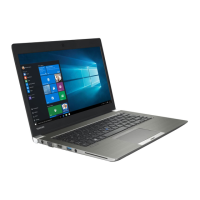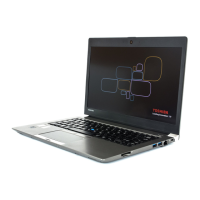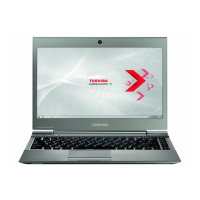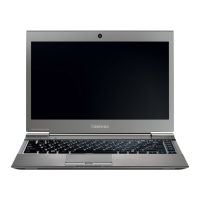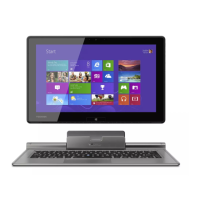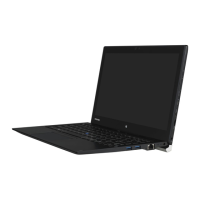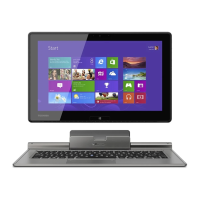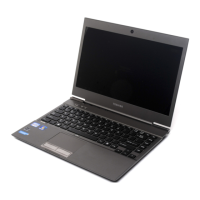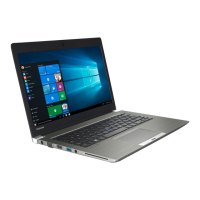
Do you have a question about the Toshiba Portege Z30-A and is the answer not in the manual?
| Graphics | Intel HD Graphics 4400 |
|---|---|
| Wireless | Wi-Fi 802.11 a/b/g/n/ac, Bluetooth 4.0 |
| Processor | Intel Core i5 or i7 (4th Gen) |
| RAM | Up to 16GB DDR3 |
| Storage | 128GB/256GB/512GB SSD |
| Display | 13.3-inch, 1366x768 or 1920x1080 resolution |
| Operating System | Windows 7 Professional |
| Weight | 1.2 kg (2.6 lbs) |
| Battery Life | Up to 12 hours |
| Ports | USB 3.0, HDMI, VGA, Ethernet, headphone/microphone combo jack, SD card slot |
Details legal notices, copyright information, and disclaimers.
Provides information on compliance with regulations like FCC, CE, VCCI, and Canada.
Important safety precautions for using the computer to prevent injury or damage.
Explains the meaning of various safety icons used in the manual.
Lists all hardware and documentation items included with the computer.
Explains text formatting and symbols used in the manual.
Basic steps for setting up and starting to use the computer.
Procedures for shutting down the computer safely.
Identifies and describes the components of the Z30-A model.
Identifies and describes the components of the Z40-A model.
Details the internal hardware components of the computer.
Explains the status and meaning of power indicators.
Explains how to use touch screen gestures for navigation and interaction.
Describes touch pad gestures for cursor control and actions.
Details the keyboard layout, keys, and special functions.
Information on battery types, care, charging, and maximizing battery life.
Instructions on connecting to and using a Local Area Network.
How to connect and use external monitors and displays.
Describes audio control functions and video modes.
Overview of pre-installed utilities and how to start them.
Utility for setting user and supervisor passwords for system security.
Monitors system functions like power, battery, and cooling for performance.
Function to protect HDD from damage caused by shocks or vibrations.
Procedures for creating recovery media and restoring the system.
Guidelines for identifying and resolving computer problems systematically.
Questions and steps to help diagnose the root cause of a problem.
Lists common hardware and system issues and their potential solutions.
Troubleshooting steps for battery-related issues.
Troubleshooting steps for keyboard problems.
Information on how to contact TOSHIBA for technical assistance.
Summarizes the computer's technical specifications, including dimensions and environmental requirements.
Information on wireless technology interoperability and health considerations.
Explanations of legal terms and footnotes related to CPU, memory, and battery life.
Definitions of terms and abbreviations used in the manual.
